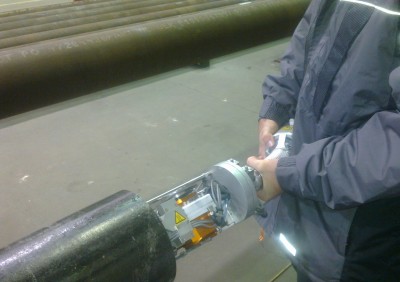Offshore Riser System Must Fulfil High Design Requirements. Snorre B oil field – Requirements for the welding joints were fulfilled with the "finishing touch".
In deep sea drilling, the term workover refers to the restoring of the extraction rate of a well. This may, for instance, be required if well components or a pipeline needs to be repaired, or if pressure conditions have changed as a result of the extraction and a leaner pipe system is to be installed to maintain the extraction pressure, or if previously abandoned oil wells are to be exploited again.
This is what happened at the Snorre B oil field in the Norwegian North Sea. Here, the operator Statoil had extracted oil in depths ranging between 300 and 350 metres since 1992 with Snorre A, a floating oil rig, before Snorre B was added to upgrade production in 2001. In 2014, the company decided to install a "workover system" at Snorre B to increase the oil extraction and production rates from deep sea wells. The manufacture of offshore drilling risers that connect the installations on the seabed with the facilities at the surface was a priority of the project.
Drilling risers are exposed to extreme stresses due to currents, their production is complex, and they must fulfil very high requirements. The basic material of the pipe must have a high yield point and tensile strength.
And what is required for the basic material must also be fulfilled by the welded joints.
However, today’s demanding material characteristics of the risers are very difficult – or even impossible – to achieve in the associated welded joints. For this, the welding roots have to fulfil highly defined specifications, part of which is a final finish with grinding tools.
Subject to a detailed machining procedure on the part of the riser manufacturer, in this case FMC Technologies (since 2017 TechnipFMC), a total of 29 welded joints with an inner diameter of 174.6 mm were to be machined from the inside. In addition to the qualification of the tool – a type 3.000 grinding robot was used in this case – one of the stipulated requirements was that work had to be carried out in one grinding direction only. Furthermore, a grinding profile in the millimetre range was to be produced, with the surface roughness not exceeding a maximum of RA 3.2 μm. The work was executed at Schelde Exotech in the Netherlands, a company that specializes in demanding welding and thermal treatment processes in the offshore and deep sea industry.
An easy task for the grinding and polishing robot technology of INSPECTOR SYSTEMS, which have been used successfully at many companies in the nuclear, on/offshore industry for many years.


